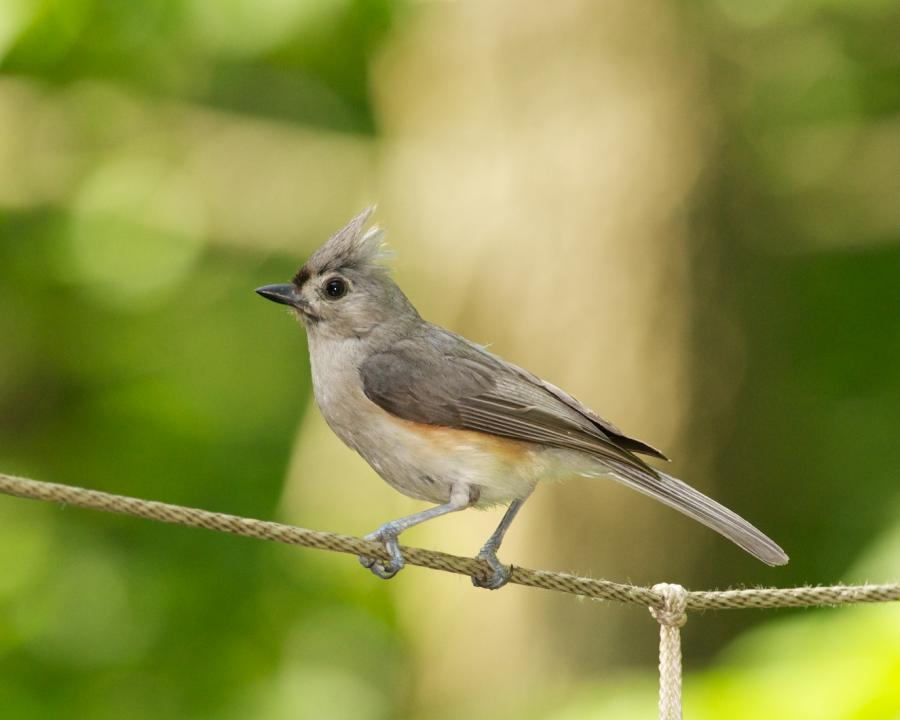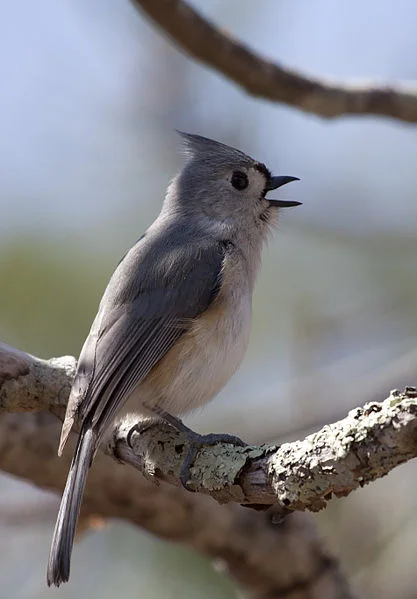Tufted Titmouse
The Tufted Titmouse (Baeolophus bicolor) is a small songbird from North America, a species in the tit and chickadee family (Paridae). The Black-crested Titmouse, found from central and southern Texas southwards, was included as a subspecies but is now considered a separate species B. atricristatus.
These birds have grey upper-parts and white underparts with a white face, a grey crest, a dark forehead and a short stout bill; they have rust-coloured flanks. The song is usually described as a whistled peter-peter-peter. They make a variety of different sounds, most having a similar tone quality.
The habitat is deciduous and mixed woods as well as gardens, parks and shrub-land in the eastern United States; they barely range into southeastern Canada in the Great Lakes region. They are all-year residents in the area effectively circumscribed by the Great Plains, the Great Lakes, the Gulf of Mexico and the Atlantic Ocean. The range is expanding northwards, possibly due to increased availability of winter food at bird feeders. The birds are nowadays resident all year even in rural Ohio where there are few bird feeders, while it was noted around 1905 that many birds from these areas migrated south in winter.
They forage actively on branches, sometimes on the ground, mainly eating insects, especially caterpillars, but also seeds, nuts and berries. They will store food for later use. They tend to be curious about their human neighbors and can sometimes be spotted on window ledges peering into the windows to watch what's going on inside. They are more shy when seen at bird feeders; their normal pattern there is to scout the feeder from the cover of trees or bushes, fly to the feeder, take a seed, and fly back to cover to eat it.
Tufted Titmice nest in a hole in a tree, either a natural cavity, a man-made nest box, or sometimes an old woodpecker nest. They line the nest with soft materials, sometimes plucking hair from a live animal such as a dog. If they find shed snake skin, they will try to incorporate pieces of it in their nest. Their eggs are under an inch long and are white or cream-colored with brownish or purplish spots. Sometimes, a bird born the year before remains to help its parents raise the next year's young. The pair may remain together and defend their territory year-round. These birds are permanent residents and often join small mixed flocks in winter. In rare cases, many birds may flock together to rest in a log or tree; some may even suffocate because so many birds are crowded inside of one cavity.



